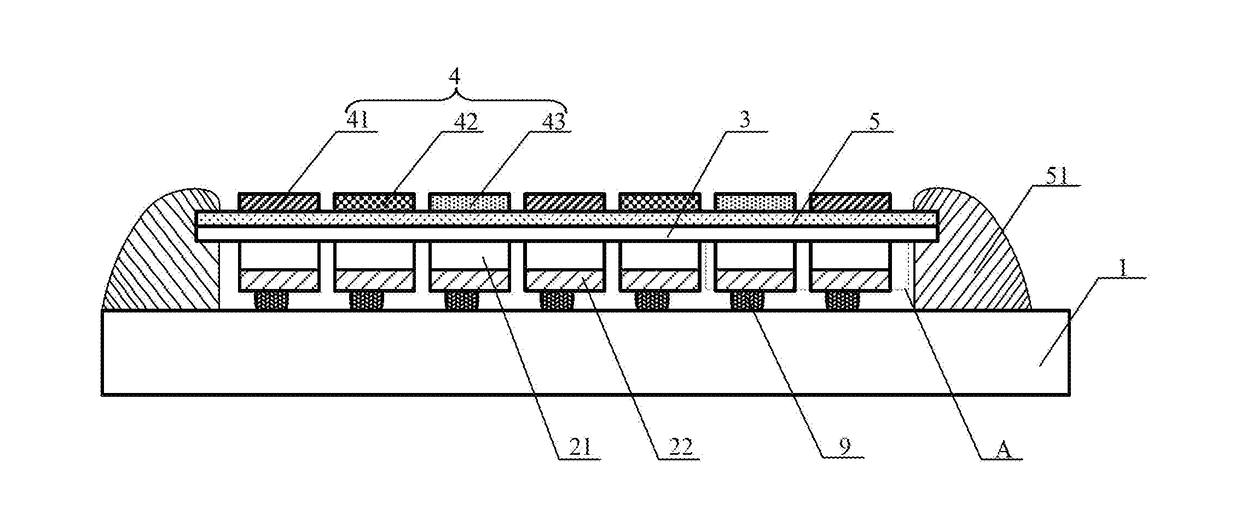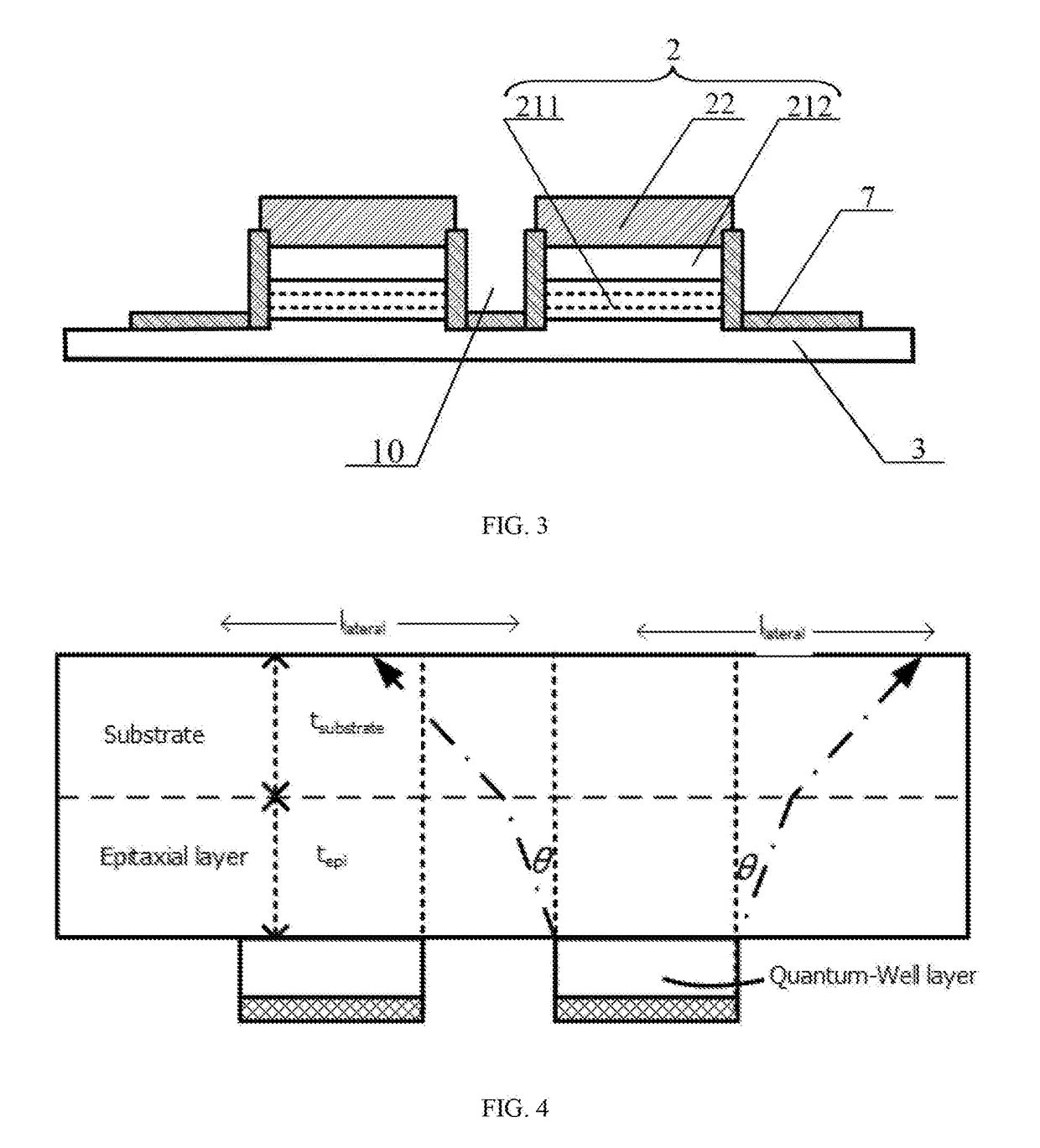Semiconductor LED Display Devices
a technology of led display and semiconductors, applied in semiconductor devices, instruments, electrical appliances, etc., can solve the problems of low resolution of colorful display panels (300 ppi), difficult to achieve full-color display, and large pixel pitch, and achieve high contrast, reduced lateral light spreading of micro-led emission, and high resolution
- Summary
- Abstract
- Description
- Claims
- Application Information
AI Technical Summary
Benefits of technology
Problems solved by technology
Method used
Image
Examples
Embodiment Construction
[0020]Embodiments of the present invention relates to semiconductor display devices. More particular embodiments of the present invention relate to a full-color display device based on III-nitride semiconductors. The present invention is designed to addresses some existing problems of III-nitride LED displays, including the low resolution due to pixel pitch size and light spreading in the color conversion layer, non-uniform emission across the array of display pixels, low power efficiency, and limited gray scale.
[0021]According to one aspect of the present invention, the full-color LED display device, as illustrated in FIGS. 1-6, comprises an array of micro-LEDs that are monolithically integrated on the single chip of an epitaxially grown III-nitride LED heterostructure, and a silicon backplane 1 of active matrix circuits. The active matrix circuits include a plurality of addressing and driving pixels 11. The substrate of the LED chip shared by the micro-LEDs 2 in the array is remov...
PUM
 Login to View More
Login to View More Abstract
Description
Claims
Application Information
 Login to View More
Login to View More - R&D
- Intellectual Property
- Life Sciences
- Materials
- Tech Scout
- Unparalleled Data Quality
- Higher Quality Content
- 60% Fewer Hallucinations
Browse by: Latest US Patents, China's latest patents, Technical Efficacy Thesaurus, Application Domain, Technology Topic, Popular Technical Reports.
© 2025 PatSnap. All rights reserved.Legal|Privacy policy|Modern Slavery Act Transparency Statement|Sitemap|About US| Contact US: help@patsnap.com



